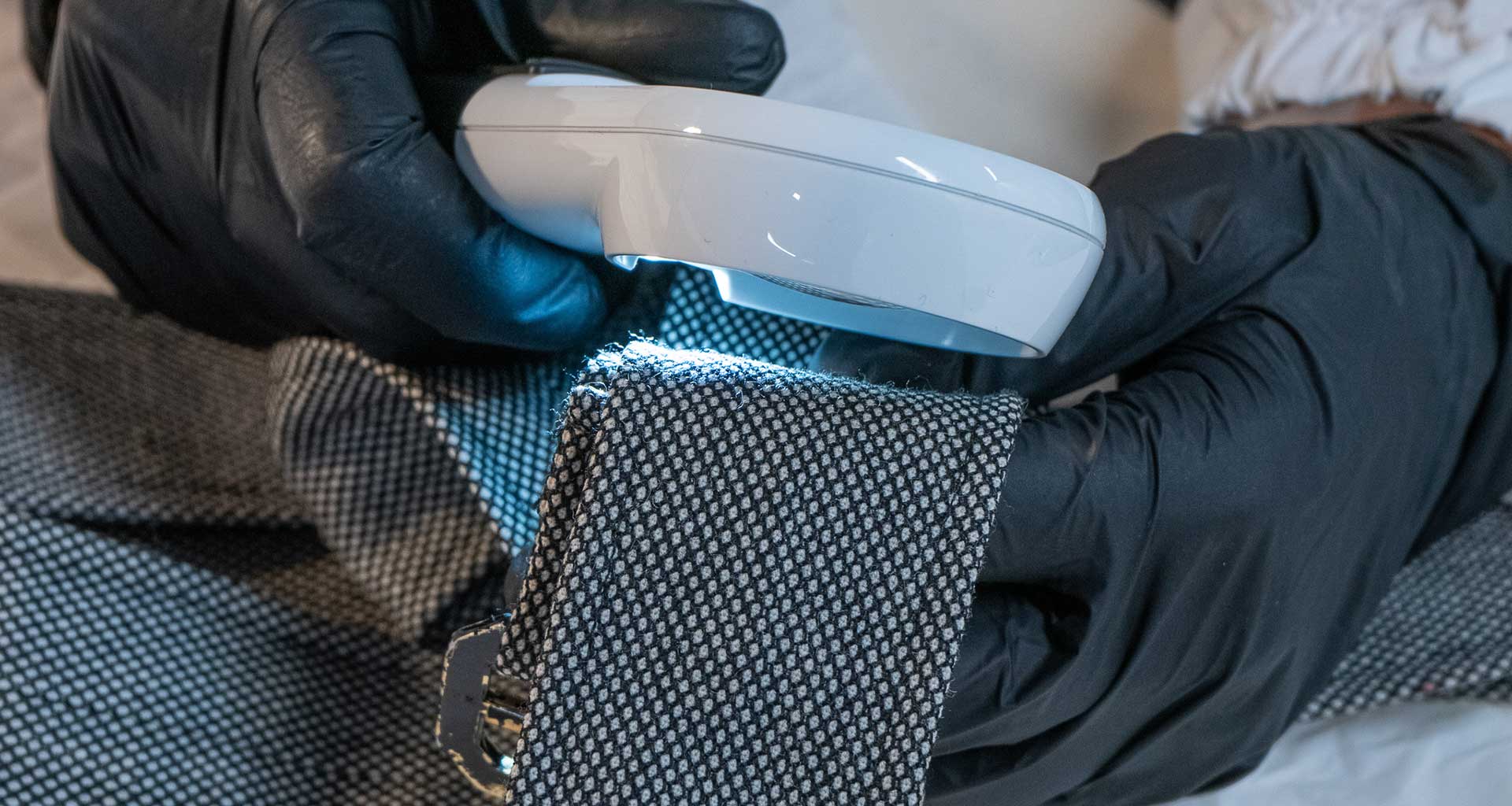
Conservation is a fundamental responsibility for any museum. Collections must be preserved from the natural laws of decay, so that they can continue to be displayed, studied and enjoyed for generations to come.
Long before we opened the doors of ITS Arcademy – Museum of Art in Fashion, our team began a thorough assessment of our extensive heritage of portfolios, fashion items and photography projects (over 15000 objects in total!). As for any collection, conservation started with an inventory of the exhibits’ state of conservation, so that individual plans of action could be made to restore them as close to their original condition as possible and prevent future decay.
The Conservatory at ITS Arcademy is where the entire Collection is housed. One of the meanings of the word conservatory is “a room with a glass walls”. We gave it this name because our future plans involve allowing visitors to see our conservation team at work through glass doors, giving them an even fuller view of creativity that is as much about preservation as it is about creation.
Virginia Dordei is the Head of the Conservation team responsible for the integrity of the entire ITS Collection, which includes daily inspections of the items on display and a never-ending process of conservation and restoration of the entire archive. Her work is virtually endless and just beginning: “Of the 1,089 fashion items in our archive, we have fully restored less than 50”, she says.
Because of the eclectic and boldly creative nature of the collection, sometimes the challenges to Conservation are entirely unexpected. Elena Greco, a member of the ITS Conservation team is used to dealing with rather peculiar situations. “We once received a portfolio with 2 lollipops in it”, she says. “I initially thought they were made of resin, but they were real, sticky and a bit melted. No packaging, of course. It was a rather time-consuming clean up job!”
Elena also restored the portfolio of ITS Contest 2016 finalist Séro Oh, which posed challenges of a different nature: “It consists of a black metal box with X-Files-style cards inside. One of the dividers was broken, so I made a similar mold out of silicone rubber and reconstructed it with appropriate putty”, she recalls. “The box wouldn’t close because of a dent, so I took a pair of pliers, a screwdriver and a hammer and hit it a few times. I remember colleagues looking puzzled into the room, maybe even thinking I was breaking something, when in fact I was fixing it…”, she adds.
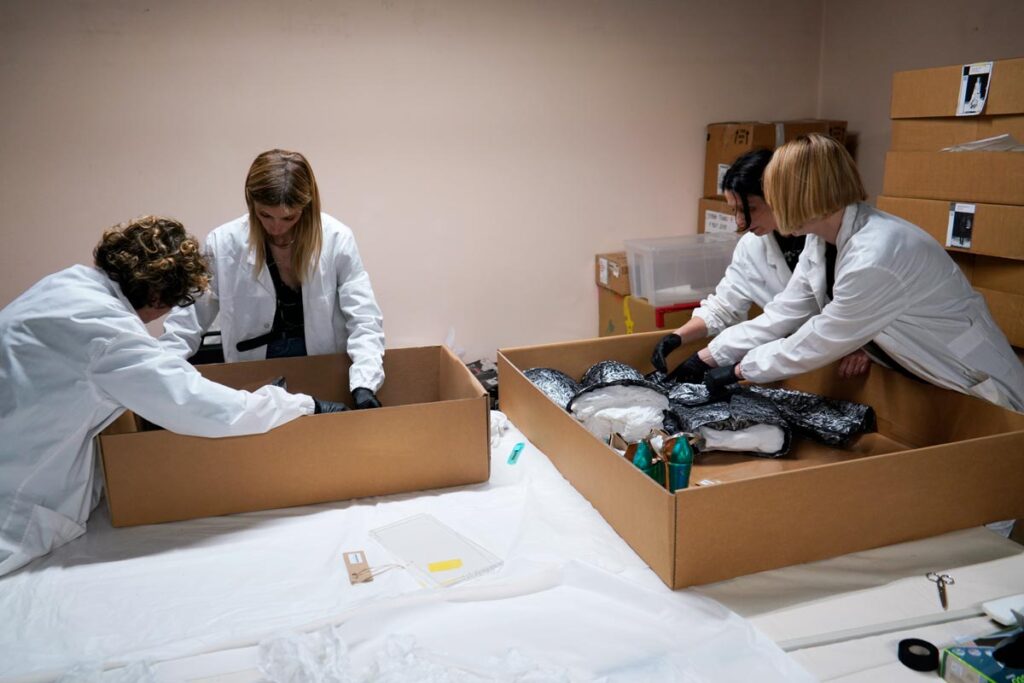
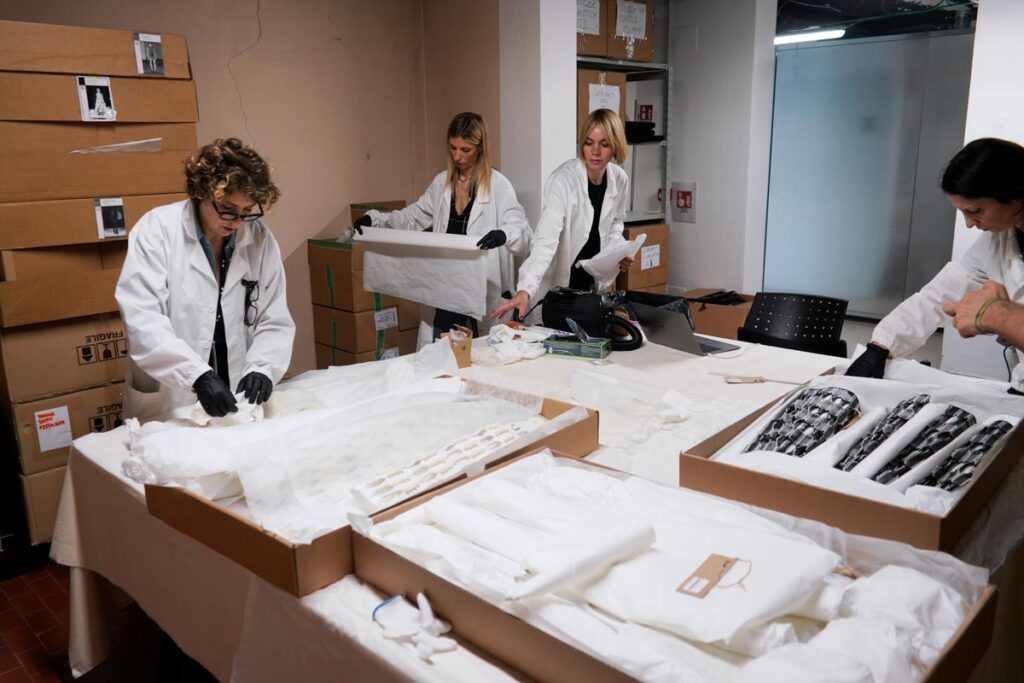
The First Exhibition – 20 Years of Contemporary Fashion Evolution features an outfit by ITS Contest 2019 winners Emma Chopova and Laura Lowena of ChopovaLowena. “The shoes are fastened with a metal buckle surrounded by numerous laces attached to the shoe with staples,” Elena tells us. “And, of course, many staples hadn’t hooked and remained open – pure torture for my hands.” They were replaced for conservation reasons, as staples tend to rust. About fifty of them were removed and stitching patiently put in their place.
“In the context of ITS Arcademy, the diversity of materials and manufacturing techniques used in design objects are crucial factors for the conservation project,” says Simona Fulceri, Cultural Heritage Conservator at Opera Laboratori, a company specialising in the preservation, dissemination, management and enhancement of cultural and museum heritage.
Simona has decades of experience in this field and ITS Arcademy is lucky to have her as a professional collaborator in our Conservation team. “The museum collection at ITS Arcademy require interdisciplinary areas of research that often go beyond traditional conservation methods. We are still in the early stages of the work, and the main goal is to develop a targeted action plan for preventive conservation capable of monitoring objects in both archival and exhibition contexts.”
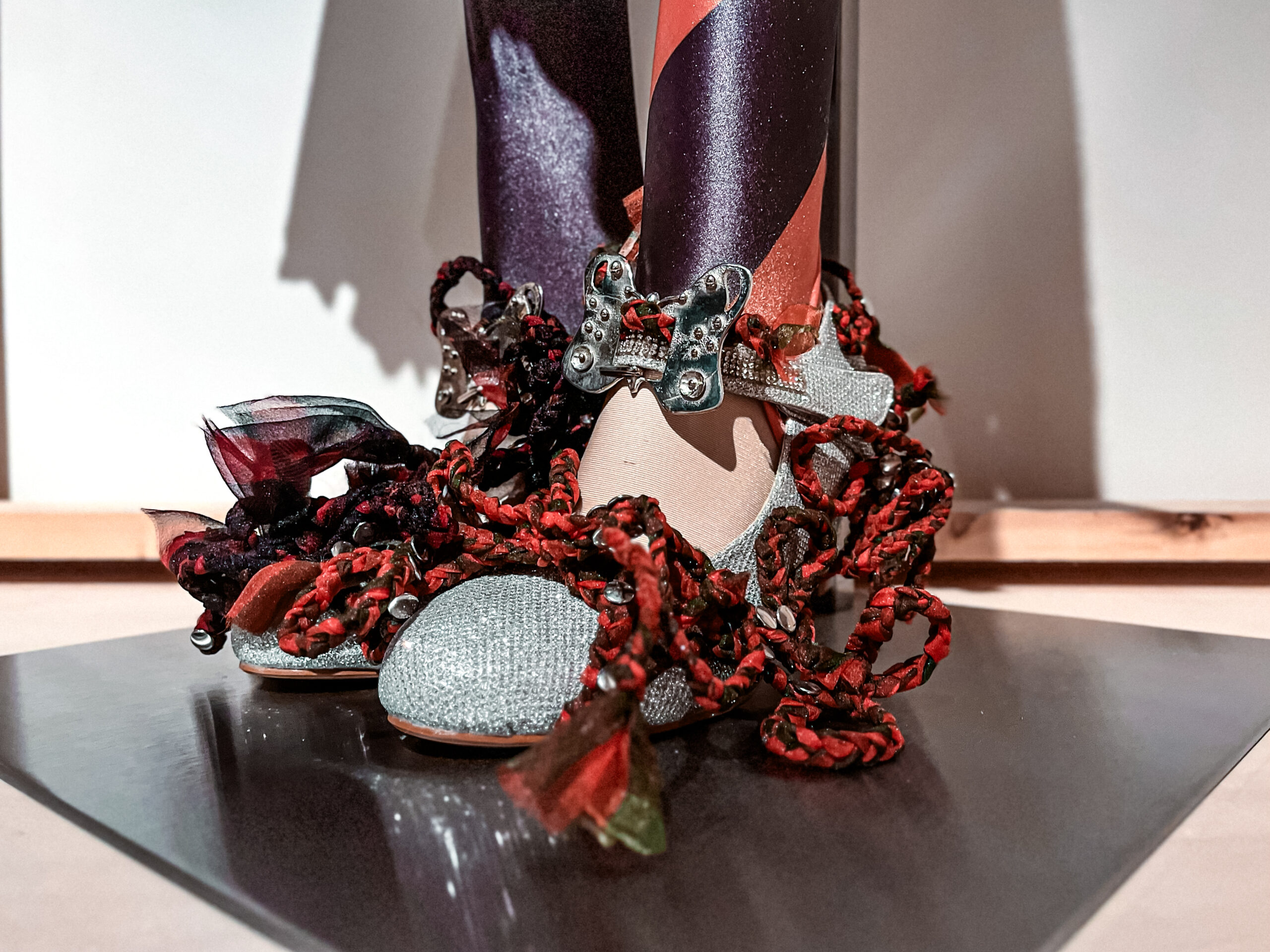
Most of the current conservation work requiring particular attention involves polymeric materials such as foams, plastics, rubbers, and synthetic fibres. The susceptibility of polymers to damage, primarily due to microclimatic factors, has led the conservation team to constantly monitor hygrometric levels. The problem of aggression caused by oxygen and sunlight was addressed by placing the objects in boxes, drawers and metal cabinets.
“An important part of the conservation project was focused on the packaging and storage of the objects in the archive,” says Simona. “The horizontal arrangement of certain items, for example, offers the best solution for conservation, as the stresses caused by the weight of the tailoring are evenly relieved. This solution is applicable to structurally deformable and flexible materials such as fabrics, while other preservation systems must be envisaged for rigid materials such as metals and polymers”, she adds.
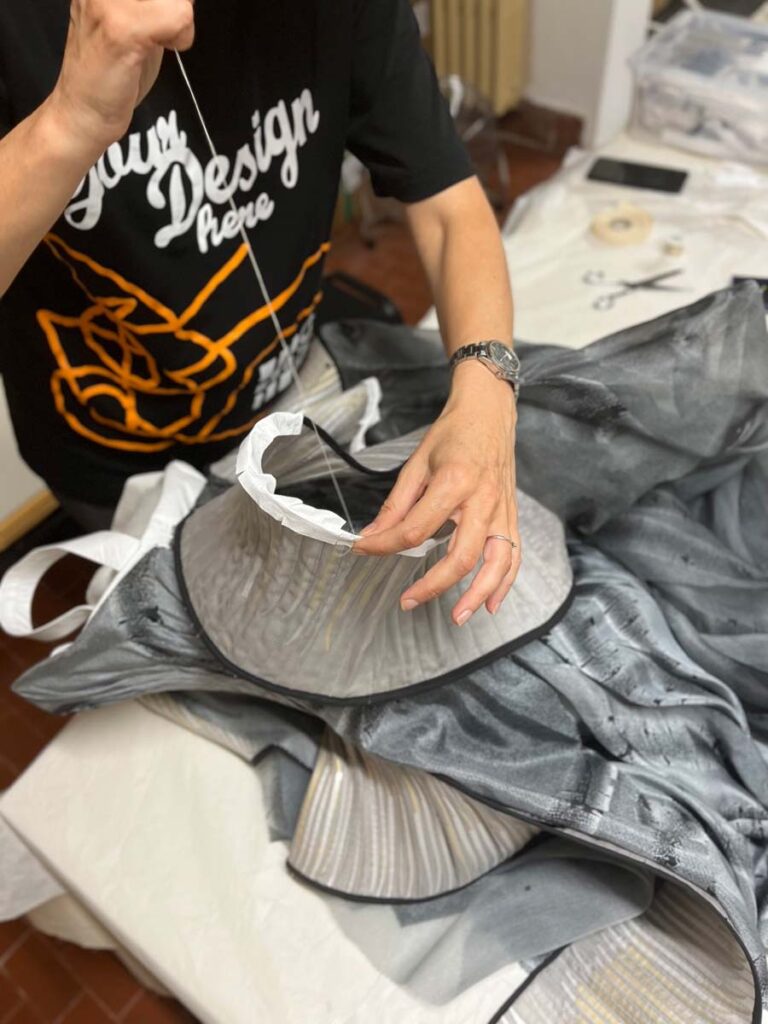
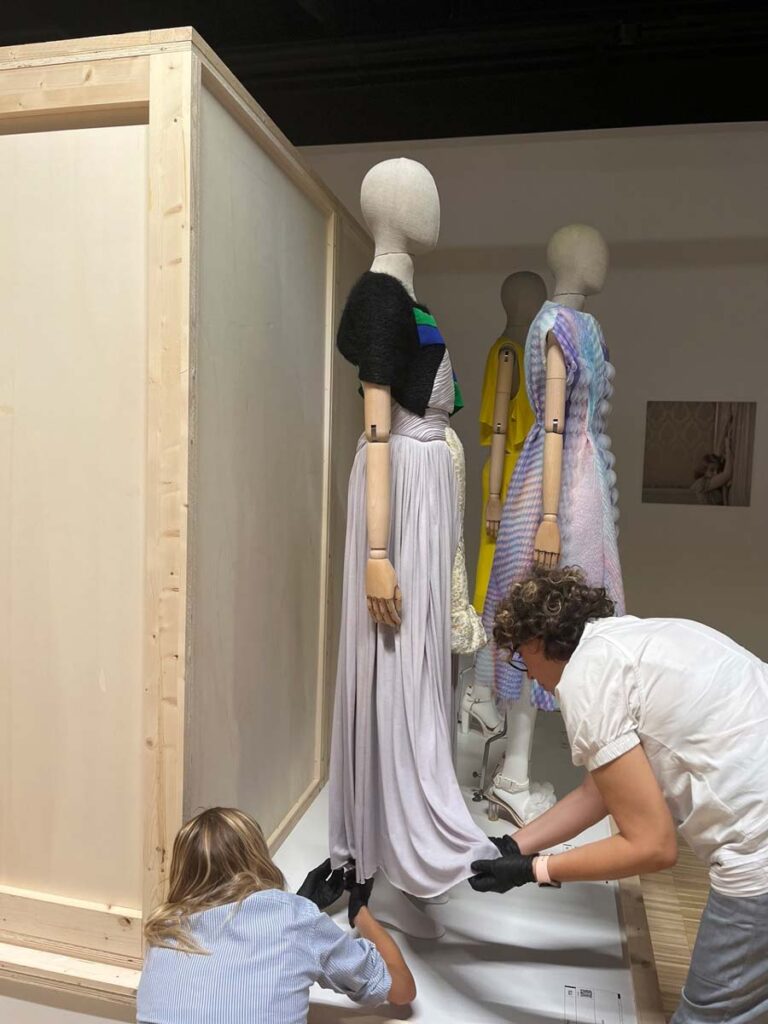
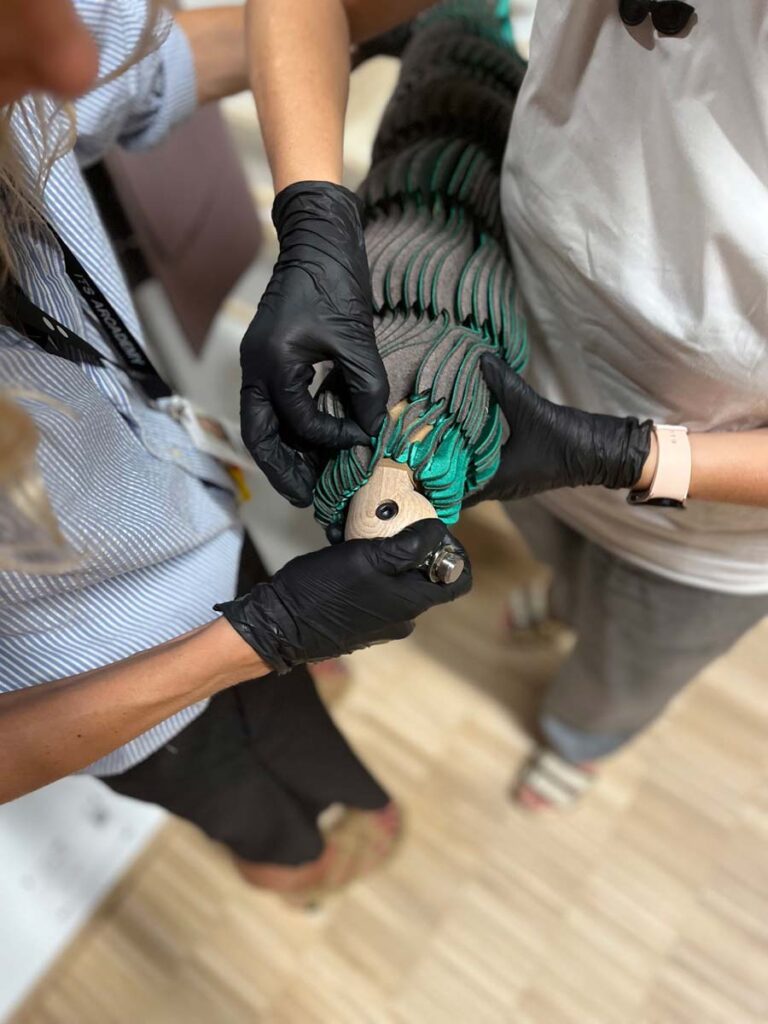
As an example of innovative preservation solutions, Simona cites the garment by ITS Contest 2009 finalist Heaven Tanudiredja, whose internal structure was entirely supported by Fosshape, a relatively new thermoplastic non-woven fabric. “We chose a structural solution that allows the garment to support itself vertically without stresses or anchor points being loaded by the weight of the material”
Among the most important conservation cases to date, ITS Contest 2018 Seiran Tsuno’s garment, exhibited for the first time during the museum’s opening, represented a real challenge. The garment has a thin, lightweight polymer structure entirely made with a 3D printing pen and polylactic acid filaments, creating an extremely fragile surface that can break easily if not handled properly. “An initial restoration intervention addressed areas that are more prone to damage, such as the middle part of the bodice, the shoulders and the legs,” Simona told us. “But we will have to challenge ourselves with the 3D pen to recreate broken parts of the outfit.”
This complex challenge involving innovative materials and execution techniques is just one of the many ways in which the ITS Arcademy team is pushing the boundaries of conservation methods.